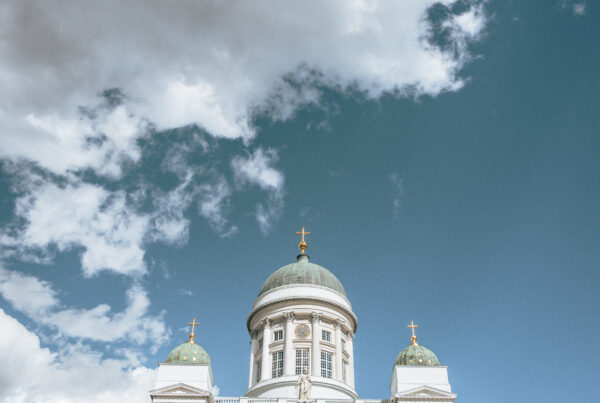Finland has a population of 5.55 million, with a density of nineteen people per square kilometer. It is the third least densely populated country.
The population of Finland is very irregular. Eighty-five percent of the population is concentrated in a small coastal plain in the southwest, living in towns and cities. The capital of the country, Helsinki, has a population of one and a half million.
History of Finland’s Population
The origins of the people come from Central Asia. They were later assimilated by peoples who migrated from Central Asia to Europe. The first settlements in Finland began around 9,000 BC, and the remains from this period show similarities with those in Russia. In the 18th century, Finland was caught in the conflict between Russia and Sweden, which greatly affected the Finnish people. During this century, tens of thousands of people lost their lives due to famine, disease, and scarcity. In the 1990s, it achieved a stable structure with a strong economy. Recently, a large part of the population has come from migrations, including Russians, Iraqi Kurds, and Somali groups.
Population Distribution in Finland
After World War II, economic changes also affected families. Finnish families began to shrink. Throughout the 20th century, the population of the country, which was higher than neighboring countries, has been gradually decreasing. This means that the natural population rate has been declining over the years. The country’s population was 5.36 million in 2020, while the total fertility rate is 1.37. Although fluctuations in Finland’s population distribution can be seen over the years, it is observed that the future population is decreasing day by day, and in relation to this, the elderly population is increasing.
Purchasing Power of Finland
The economy of Finland is a highly industrialized, mixed economic system similar to Western economies like the United Kingdom and Sweden. With a high level of welfare and a low unemployment rate, the country is largely industrialized. Services account for seventy-two percent and manufacturing accounts for thirty-one percent. The primary sector has a three percent share. The per capita income reaches fifty thousand Euros, placing the country among the top fifteen in the world rankings.
Due to the significant role of exports and the small population, the opening to foreign markets has also been considerable. However, it is known that the aging population of the country will lead to significant problems in the future as it increases labor costs. The country’s economy relies on the service sector. Particularly, the technology and finance sectors have developed. The industry has also shown growth after World War II, accounting for thirty percent of the national income. The country has developed in areas such as paper, metal, electronics, and textiles, but has not been able to develop much in agriculture due to climatic conditions. Generally, wheat, potatoes, and sugar beets are cultivated. Finland, which ranks first in terms of forest resources, has also developed in fishing.
Household Income and Consumption in Finland
In 2008, the Organization for Economic Cooperation and Development stated that the household income and consumption in Finland shows less disparity between the rich and the poor compared to more developed countries. The country is recorded as one of those where income inequality is low even among wealthy and middle-class households.
Seventy-four percent of Finnish households have a car. Fifty-eight percent have internet at home, and the total household consumption is twenty thousand Euros. The upper-level white-collar population has a consumption of twenty-seven thousand five hundred Euros with a population of four hundred ten thousand.
Finland’s Foreign Trade
Finland’s foreign trade volume has a significant share relative to its population. In 2018, it completed seventy-six billion Euros in exports and seventy-eight million Euros in imports, totaling one hundred fifty-four billion Euros. It has traded most with EU countries. Some of these countries are:
- Germany
- Sweden
- Netherlands
- China
- Russia
- USA
- United Kingdom.



